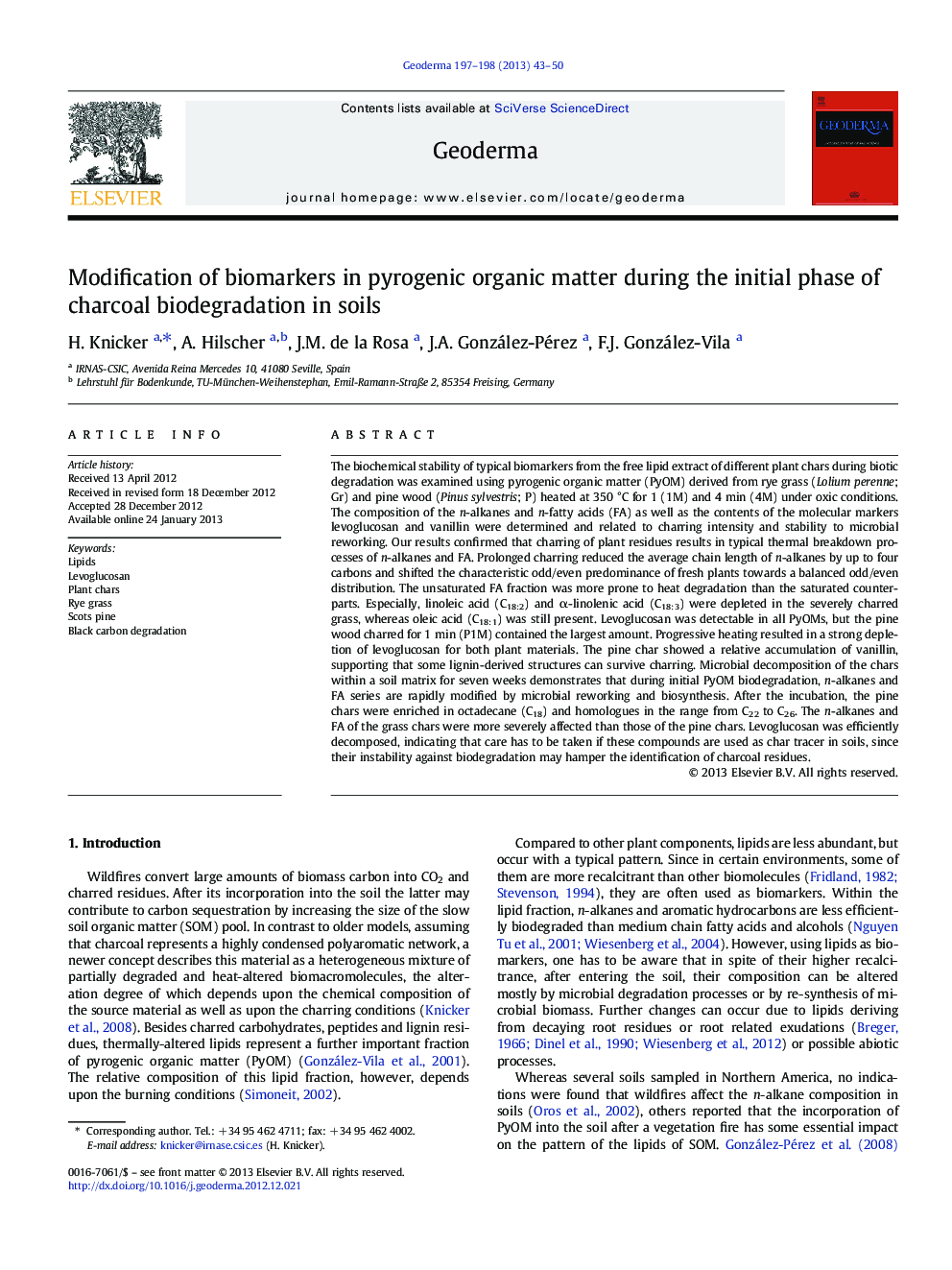| کد مقاله | کد نشریه | سال انتشار | مقاله انگلیسی | نسخه تمام متن |
|---|---|---|---|---|
| 4573724 | 1629488 | 2013 | 8 صفحه PDF | دانلود رایگان |

The biochemical stability of typical biomarkers from the free lipid extract of different plant chars during biotic degradation was examined using pyrogenic organic matter (PyOM) derived from rye grass (Lolium perenne; Gr) and pine wood (Pinus sylvestris; P) heated at 350 °C for 1 (1M) and 4 min (4M) under oxic conditions. The composition of the n-alkanes and n-fatty acids (FA) as well as the contents of the molecular markers levoglucosan and vanillin were determined and related to charring intensity and stability to microbial reworking. Our results confirmed that charring of plant residues results in typical thermal breakdown processes of n-alkanes and FA. Prolonged charring reduced the average chain length of n-alkanes by up to four carbons and shifted the characteristic odd/even predominance of fresh plants towards a balanced odd/even distribution. The unsaturated FA fraction was more prone to heat degradation than the saturated counterparts. Especially, linoleic acid (C18:2) and α-linolenic acid (C18:3) were depleted in the severely charred grass, whereas oleic acid (C18:1) was still present. Levoglucosan was detectable in all PyOMs, but the pine wood charred for 1 min (P1M) contained the largest amount. Progressive heating resulted in a strong depletion of levoglucosan for both plant materials. The pine char showed a relative accumulation of vanillin, supporting that some lignin-derived structures can survive charring. Microbial decomposition of the chars within a soil matrix for seven weeks demonstrates that during initial PyOM biodegradation, n-alkanes and FA series are rapidly modified by microbial reworking and biosynthesis. After the incubation, the pine chars were enriched in octadecane (C18) and homologues in the range from C22 to C26. The n-alkanes and FA of the grass chars were more severely affected than those of the pine chars. Levoglucosan was efficiently decomposed, indicating that care has to be taken if these compounds are used as char tracer in soils, since their instability against biodegradation may hamper the identification of charcoal residues.
► Lignin components can survive charring of plant residues.
► Lipid pattern of char in soils is microbially altered during post-fire recovery.
► The lipid pattern in post-fire soils changes due to degradation and resynthesis.
► Levoglucans are rapidly decomposed during post-fire microbial activities.
Journal: Geoderma - Volumes 197–198, April 2013, Pages 43–50